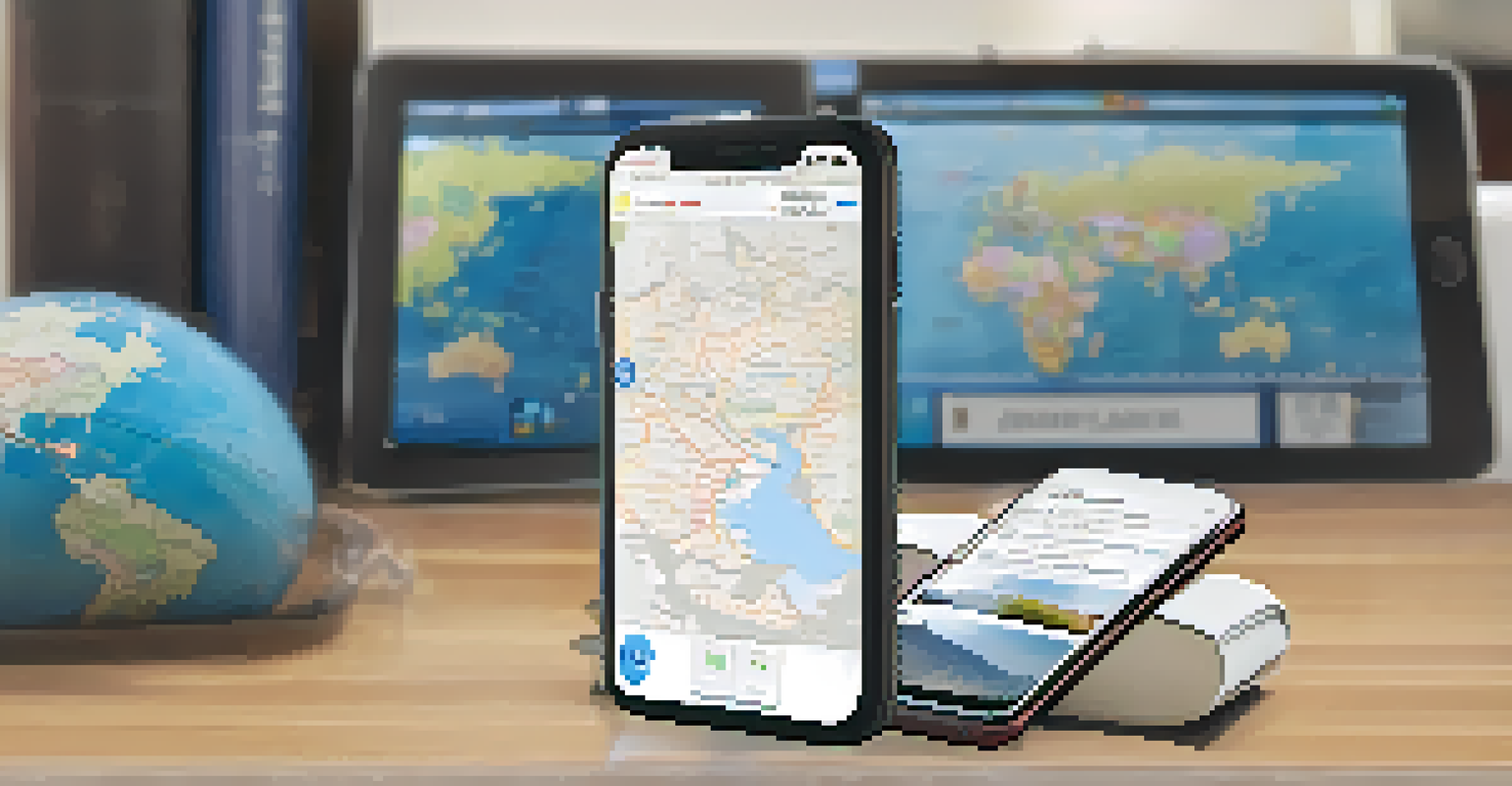Best Practices for Scheduling Meetings While Traveling

Understand Your Time Zone Differences
When traveling, time zones can be your best friend or your worst enemy. Understanding the time difference between your location and your colleagues’ is crucial. A quick online search or a world clock app can save you from scheduling a meeting at 3 AM for someone halfway around the globe.
Time is what we want most, but what we use worst.
Consider using tools like Google Calendar, which automatically adjusts for time zones, ensuring everyone is on the same page. This small step can prevent confusion and demonstrate respect for others' time.
Remember to communicate the time zone clearly when sending out invites. It’s a simple detail that can make a significant difference in how smoothly your meeting goes.
Leverage Technology for Seamless Scheduling
In today's digital age, technology can be your best ally in managing meetings while traveling. Utilize scheduling tools like Doodle or Calendly that allow participants to pick times that work for them, reducing the back-and-forth of emails.

Video conferencing platforms like Zoom or Microsoft Teams also facilitate remote meetings effortlessly, allowing you to connect from anywhere. Just make sure your device is set up and tested before the meeting to avoid technical hiccups.
Understand Time Zone Differences
Knowing the time zones of participants helps avoid scheduling conflicts and shows respect for their time.
These tools not only save time but also ensure everyone can participate, regardless of their location. Embracing technology helps keep your work life organized, even on the go.
Choose Convenient Meeting Times
Finding a suitable time for everyone can feel like solving a puzzle, especially when traveling. Aim for times that are generally considered 'working hours' for most participants, avoiding early mornings or late evenings.
The key is not to prioritize what's on your schedule, but to schedule your priorities.
Consider the nature of your participants' work. If you're meeting with team members in different industries, be mindful of their schedules and deadlines. Flexibility is key here—don't hesitate to suggest a time that might not be your first choice.
By being accommodating, you foster goodwill and strengthen professional relationships, making it easier to collaborate effectively in the future.
Communicate Your Travel Plans Early
Transparency is essential when scheduling meetings during travel. Inform your colleagues about your travel schedule well in advance, so they know when you’ll be available and when you won’t.
This proactive communication can help manage expectations and allows others to plan their work around your availability. It also opens up the opportunity for them to suggest alternative times if your proposed slots don’t work.
Leverage Technology for Meetings
Utilizing scheduling and video conferencing tools streamlines the process of organizing meetings while traveling.
By keeping everyone in the loop, you enhance teamwork and foster a supportive work environment that values each member's time.
Be Mindful of Your Environment
When scheduling meetings while traveling, consider where you’ll be during the call. Whether you’re at a café, airport, or hotel room, your environment can impact the quality of the meeting.
Ensure you have a quiet, distraction-free space to take the call. If you anticipate background noise, using headphones or a noise-canceling mic can help maintain clarity and professionalism.
Being conscious of your surroundings shows respect for your colleagues' time and enhances the meeting experience for everyone involved.
Send Reminders and Agendas
Even the best-laid plans can fall through the cracks, especially with busy schedules. Sending a reminder a day or two before your meeting can ensure everyone is prepared and on the same page.
Along with the reminder, provide a brief agenda to guide the discussion. This sets clear expectations and helps participants come prepared with their thoughts and questions.
Communicate and Follow Up
Clear communication about travel plans and a thoughtful follow-up after meetings fosters collaboration and accountability.
A well-organized meeting not only maximizes productivity but also demonstrates your commitment to making the most of everyone’s time.
Be Flexible and Ready to Adapt
Travel can be unpredictable, and sometimes, despite your best efforts, you may need to adjust your meeting plans. Stay flexible and be willing to reschedule if necessary.
If you find yourself in a situation where you’re delayed or unable to meet as planned, communicate this as soon as possible. Most colleagues will appreciate your honesty and adaptability.

This approach not only helps maintain good relationships but also reinforces a culture of understanding and cooperation within your team.
Follow Up After the Meeting
After your meeting, take a moment to follow up with a quick email summarizing the key points discussed. This reinforces what was covered and ensures everyone is aligned on next steps.
If there were any action items assigned during the meeting, list them out clearly, along with deadlines. This helps keep everyone accountable and focused on moving forward.
A thoughtful follow-up shows professionalism and enhances collaboration, making future meetings even more productive.